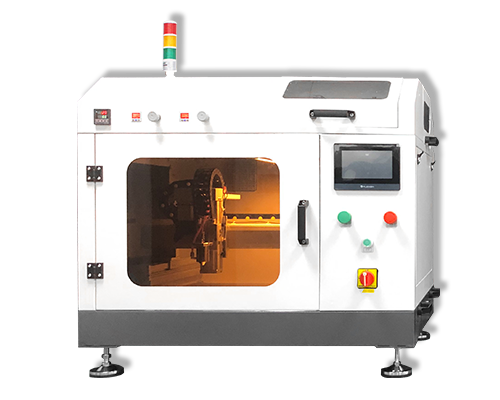Composition of water electrolysis hydrogen production system
In the context of the “dual carbon” goal, with the release of the medium and long-term plan for the development of the hydrogen energy industry, hydrogen energy has risen to the status of the national energy strategy. Converting intermittent renewable energy into hydrogen energy can realize the optimal allocation of various energy sources across regions and times.
The construction and operation practice over the years has proved that the alkaline electrolysis water hydrogen production system is more reasonable composed of the following parts: water electrolysis cell and its auxiliary equipment, raw water preparation device, lye preparation device, hydrogen purification device, hydrogen compressor , hydrogen storage tank, DC power supply, automatic control device, etc.
The main equipment of large-scale water electrolysis hydrogen production system includes electrolysis water hydrogen production device, hydrogen purification device, hydrogen compressor, hydrogen storage tank, etc. The main equipment configuration principles of the system are: on the premise of fully satisfying the power supply conditions and hydrogen application scenarios, to achieve low energy consumption, low hydrogen cost, and safe and reliable operation.

Electrolyzer:
The electrolyzer is the core equipment of the water electrolysis hydrogen production system. At present, there are mainly three types of electrolyzers: alkaline electrolyzer, proton exchange membrane (PEM) electrolyzer and solid oxide (SOEC) electrolyzer. Among them, the operating temperature of SOEC electrolyzer is 650-1000 ℃, and it is still in the demonstration operation stage. Alkaline electrolyzers and PEM electrolyzers have been commercialized, alkaline electrolyzers have advantages in efficiency, service life and investment cost, and PEM electrolyzers have advantages in operating pressure, load range, and footprint. When coupled with renewable energy sources, PEM electrolyzers have a wider load range and greater flexibility, but there are cost concerns. The current lower limit of investment cost for PEM electrolyzers is about 2 times that of alkaline electrolyzers, but in the long-term, the cost of the two types of electrolyzers is likely to be the same.
Purification device:
The purity of hydrogen produced by the alkaline electrolysis water hydrogen production device is generally less than 99.9%, and the hydrogen purification device is usually set up according to the user’s hydrogen consumption. According to the operation experience of water electrolysis hydrogen production system configuration purification device for many years in my country, it is possible to configure one purification device for multiple water electrolysis hydrogen production devices, or a single device. For large-scale water electrolysis hydrogen production system, it is recommended to use multiple devices. configuration method. It is understood that there are already 5 or more electrolyzed water hydrogen production devices in China equipped with a purification device system, and there are even more than 10 small and medium-sized electrolysis water hydrogen production devices equipped with a purification device.
Hydrogen compressor:
A hydrogen compressor should be installed in the electrolysis water hydrogen production system if one of the following situations occurs: the working pressure of the electrolysis water hydrogen production device is lower than the pressure required by the hydrogen user; when the system is equipped with a hydrogen storage tank as required, the hydrogen pressure should be increased; When supplying hydrogen to the outside, the hydrogen pressure should be increased to meet the hydrogen pressure along the way and at the end. If the hydrogen produced by the water electrolysis hydrogen production system may have multiple hydrogen supply methods, two or more pressure levels should be selected to configure the compressor after technical and economic comparison. According to the capacity, pressure and purity of hydrogen, reciprocating and centrifugal compressors can be selected for hydrogen compressors, and diaphragm compressors can be selected for high-pressure grades of medium and small capacity.
Hydrogen storage tank:
The installation of hydrogen storage tanks is not only a measure to ensure the stable operation of the equipment, but also creates conditions for reducing investment and reducing hydrogen costs, especially for off-grid photovoltaic power generation and wind power generation. Usually, the pressure of the hydrogen storage tank is higher than the hydrogen production pressure and the hydrogen supply pressure, so the electrolyzed water hydrogen production system with the hydrogen storage tank should be equipped with a hydrogen compressor, and a pressure regulating device should be installed at the hydrogen supply end of the hydrogen storage tank. The hydrogen storage tank can be equipped with spherical tank and cylindrical tank according to the hydrogen storage pressure requirements. The total capacity of the hydrogen storage tank of the electrolyzed water hydrogen production system should be determined according to the unbalanced situation of the hydrogen production volume of the specific project, the fluctuation of the power supply, the hydrogen consumption or the hydrogen supply volume, etc., after technical and economic comparison.

Ultrasonic spray fuel cell catalyst coating system can produce highly uniform, repeatable and durable coatings. Our ultrasonic spraying can well control coating properties, significantly reduce material usage, and reduce maintenance and downtime.
Our company’s ultrasonic spraying equipment can be sprayed on a variety of different metal alloys, including the preparation of platinum, nickel, iridium and ruthenium-based fuel cell catalyst coatings, as well as PEMs, GDLs, DMFCs (direct methanol fuel cells) and SOFCs (solid Oxide fuel cell) manufacturing. The battery manufactured by this technology has the characteristics of high battery load and high battery efficiency.
The optional ultrasonic dispersion system can uniformly disperse the catalyst solution without blocking the ultrasonic nozzle, thereby providing a uniform and homogeneous fuel cell catalyst coating, and has a controlled droplet size from ultra-low flow to production-scale flow.

